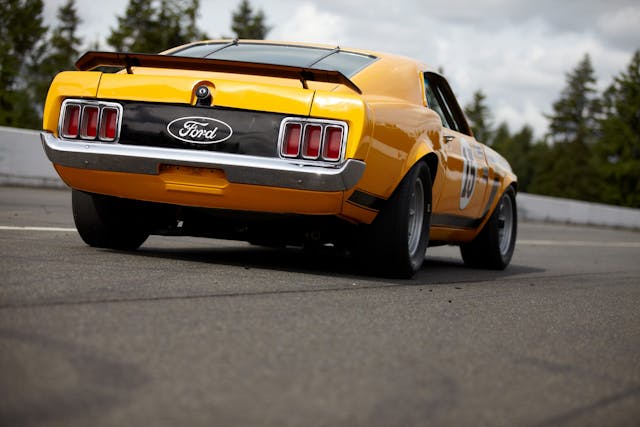Media | Articles
Mustangs are for smiles—Shelbys especially
My first encounter with the Ford Mustang came in May 1964. My dad had heard that Monaco Ford in Glastonbury, Connecticut, had a new Mustang delivered late one Saturday night. You couldn’t see anything because the showroom windows were covered with brown paper, but when the car was finally shown for the first time, my father and I were there. Like everyone else getting their first glimpse of the Mustang that spring, I’d never seen anything like it.
A few years later, a mechanic at nearby Candy Poole’s Sports Car Shop modified his 1965 K-code fastback. He added a second pair of taillights—which was a cool thing at the time—swapped out the rear quarter louvres for Plexiglas, and installed fog lamps in the grille to give it the appearance of a GT350. It was the closest I’d come to the real thing.
I didn’t get my own Mustang until the early 1970s. It was a Wimbledon White 1966 coupe with a six-cylinder engine and three-speed on the floor. It had been hit hard in the right front, and I bought it because I knew I could fix it. I drove it a couple of times after it was done, but of course it didn’t have enough power for me, so I sold it to my girlfriend’s father. By that point, I was enamored with Boss 302s anyway. I liked high-revving engines, and for pushrod V-8s, those 302s spun pretty fast.
A few years later, a guy brought me his Boss 302 to have a dent removed. In his view, the car would never be the same because it had been damaged, so he sold it to me. I fixed it and used it sparingly before selling it, which I regretted immediately. Even in my brief ownership, I was reminded that those Trans Am machines were serious race cars driven by champions like Parnelli Jones and George Follmer.

By the late 1980s, I had gradually worked my way up the Mustang food chain, having owned a few others, including a Mach 1. Then, in 1988 just after my shop, F40, began selling and brokering cars, we took in a street 1965 GT350 originally sold by the legendary Tasca Ford. We cleaned it up, and then I drove to Rhode Island to speak with Bob Tasca, Sr., in order to fill in its history. I couldn’t keep the car because I’d bought it to sell, but learning more about it taught me just how good those first-year Shelby Mustangs were.
Marketplace
Buy and sell classics with confidence
A couple of years ago, I received a call from a man whose late father had been an avid Ford collector. Initially, the son asked me to sell his dad’s 1965 GT350 for the family, so I drove up to Northampton, Massachusetts, and took it back to F40 to authenticate it. All the numbers matched, and additional research confirmed that it was a real Shelby. Ordered to be a drag car, it was delivered without stripes and on plain steel wheels. The Shelby American Automobile Club had documented it as a three-owner car. The original buyer had traded it in at Butler Chevrolet in Worcester, Massachusetts, for a 1968 Corvette, and then the GT350 sat buried under a pile of snow. A 16-year-old and his grandfather looking for the young man’s first car bought the Mustang for $1450 and didn’t realize it was a Shelby until they dug it out of the snow. The kid kept it for more than 30 years, then sold it to a doctor who owned it for about 20 years, until his death.
Before I followed up with the late doctor’s family, I made the mistake of driving the Shelby. Right then I knew I had to have it. When I spoke to the widow and her sons, I told them, “I have good news and I have great news: I think I’ve sold the car, and I’m the buyer!” One of the sons told me the very fair price his father had set, and I jumped on it. The widow broke into tears while both sons laughed: Their father’s last wish had been for me to buy his GT350.
The car does everything right. It sounds and drives like a race car, but you can use it on the street. Now I have a real Shelby with great history, which includes the day I smoked the tires with my grandson, to our great delight. Mustangs do have a way of putting smiles on the faces of those who encounter them, no matter how old they might be.




